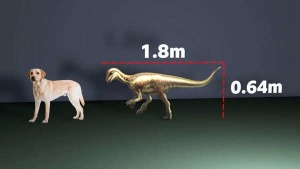The International Space Station (ISS) has welcomed its first Indian astronaut, Shubhanshu Shukla, amidst a flurry of hugs and celebrations.

The spacecraft Grace, the fifth in the Dragon series, achieved a successful soft docking with the ISS at 16.01 IST on Thursday, soaring over the North Atlantic Ocean.
Shukla's voyage marks a significant milestone, making him the second Indian to venture into space, nearly four decades after Rakesh Sharma's pioneering flight in 1984. Joining him on the Axiom-4 mission are Slawosz Uznanski-Wisniewski, representing Poland's return to space since 1978, and Tibor Kapu, Hungary's first astronaut in 45 years. The crew launched from NASA's Kennedy Space Center on Wednesday.
India is rapidly advancing its space program, with several ambitious projects in development:
India's space capabilities have already been demonstrated through significant achievements, including the successful deployment of an orbiter around Mars and the soft landing of a robotic spacecraft near the Moon’s south pole.
Shukla's experiments aboard the Axiom-4 mission are strategically designed to provide direct support to the Gaganyaan program.
His research is centered on the effects of microgravity on:
These are critical areas of study for ensuring the success of long-term human spaceflight. Shukla is also examining tardigrades to gain insights into survival mechanisms under extreme conditions. The goals of these experiments include developing sustainable space food systems, safeguarding astronaut well-being, and enhancing life support strategies for future Indian space endeavors.
NISAR Satellite: NASA and ISRO are preparing to launch the $1.5 billion NISAR satellite in July from India’s Satish Dhawan Space Centre. This sophisticated Earth-observing mission will employ high-precision radar to monitor surface changes around the clock. The satellite will gather essential data related to:
The advanced radar technology will provide 24/7, all-weather imaging capabilities, overcoming the limitations of traditional Earth-observing satellites. This will facilitate more precise and consistent monitoring of natural disasters, environmental changes, and agricultural trends.
NISAR’s anticipated global applications position it as a potential catalyst for scientists, farmers, and disaster response teams worldwide.
Newer articles
 Hetmyer's Heroics: Orcas Stun MI New York with Last-Ball Six in Record-Breaking MLC Chase
Hetmyer's Heroics: Orcas Stun MI New York with Last-Ball Six in Record-Breaking MLC Chase
 Android Users Face Critical Security Risks: Update Your Devices Now, Warns Government Agency
Android Users Face Critical Security Risks: Update Your Devices Now, Warns Government Agency
 Greg Chappell Hails Rishabh Pant's "Revolutionary" Batting, Likens Him to Gilchrist
Greg Chappell Hails Rishabh Pant's "Revolutionary" Batting, Likens Him to Gilchrist
 Dog-Sized Dinosaur Fossil Unearths New Insights into Prehistoric Life Alongside Giants
Dog-Sized Dinosaur Fossil Unearths New Insights into Prehistoric Life Alongside Giants
 West Indies Captain Chase Slams Umpiring After Test Loss, Demands Accountability
West Indies Captain Chase Slams Umpiring After Test Loss, Demands Accountability
 IRCTC's AI Chatbot, AskDisha 2.0, Streamlines Train Ticket Booking, Refunds & Information
IRCTC's AI Chatbot, AskDisha 2.0, Streamlines Train Ticket Booking, Refunds & Information
 Freestyle Chess India Event Scrapped Due to Sponsorship Issues; Carlsen Absence Confirmed
Freestyle Chess India Event Scrapped Due to Sponsorship Issues; Carlsen Absence Confirmed
 New Zealand Cricket Announces Packed 2025-26 Home Schedule Featuring Australia, England, West Indies & South Africa
New Zealand Cricket Announces Packed 2025-26 Home Schedule Featuring Australia, England, West Indies & South Africa
 Moto G54 Gets Significant Price Drop in India: Check Out the New Affordable Price Tag
Moto G54 Gets Significant Price Drop in India: Check Out the New Affordable Price Tag
 Converting JPG to PDF: A Comprehensive Guide for Preserving Image Quality and Ensuring Accessibility
Converting JPG to PDF: A Comprehensive Guide for Preserving Image Quality and Ensuring Accessibility